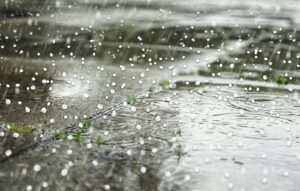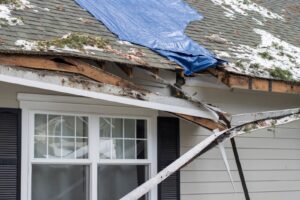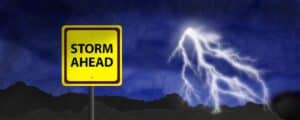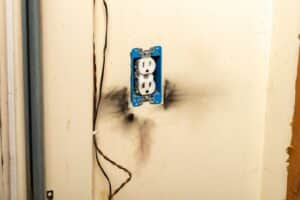Mold growth in your home can cause health problems and look unsightly. Rather than waiting to clean up your mold problem, you might want to check some places in your home that are more prone to growing mold.
Where is mold growth in home primarily located? It is typically found in places near or around sources of water. So you may want to look for mold:
- Around appliances that use water, like dishwashers, washing machines, and refrigerators.
- Near water sources like sinks, toilets, bathtubs, and showers.
- In old or leftover foods.
- Near windows.
- Around your leaky plumbing.
- In air vents.
Routinely checking these areas can help eliminate mold before it becomes a health risk. Here’s what you should look for.
What Mold Looks Like
Mold begins to grow when its pores land in the local environment conducive to growth. This is usually a moist, warm, and dark environment.
Mold spores are everywhere. It is impossible to clean your home in such a way as to eliminate any trace of mold.
When mold appears, it will look like a cluster of tiny dots. As the conditions become right, multiple spores start to grow and multiply. As they grow, they release more spores that land and begin to grow and expand their own colonies.
In other words, mold growth is sporadic. However, if you find a cluster of discolored spots somewhere moist, secluded, and out of direct sunlight, chances are high that it’s mold.
Mold doesn’t have a unified texture. Some mold can be slimy, and others are fuzzy. The color of mold can include a full spectrum of colors, including white and black. Generally, if it looks out of the ordinary, it probably is.
A Quick Note on Cleaning Chemicals
When it comes to mold damage repair and mold cleanup, we strongly advise you to refrain from getting creative with mixing chemicals. For example, mixing cleaning chemicals like vinegar and bleach can create toxic gasses harmful to your health. Instead, it is often best to use store-bought chemicals or water-diluted potent chemical mixtures when cleaning up mold spots.
- Check Your Appliances
Your water-using appliances are prime real estate for mold. They use warm water, maintain a moist environment, and are easily overlooked when cleaning day comes around.
You may see spots of mold inside your dishwasher and washing machines. This is because the insides are exposed to warm water frequently. If they frequently stay warm and moist, they become brewing grounds for mold.
Mold growing inside your appliance is a fairly common problem. You can use household chemicals like bleach or vinegar and baking soda to kill off mold colonies growing inside your appliances.
You will probably want to check your hose connections as well. If the dishwasher was installed incorrectly, there may be a leak around the water intake or drain. Be sure to check these out every once in a while to be sure no mold is sheltering in the dark spaces behind and under your appliances.
- Look Near Water Sources
Water sources like sinks, bathtubs, showers, and toilets all make excellent environments for mold growth.
Bathrooms are the mixing ground for all things water in your home and can help create many places for mold to grow. Likewise, your kitchen area is fertile ground for mold spores, especially around your sink.
In bathrooms, make sure to close your shower curtain and routinely clean your floor mats. These objects are often the most susceptible to retaining moisture on their surfaces. Making sure these items are cleaned regularly and allowing sufficient time to dry thoroughly reduces the possibility of mold.
Be sure to regularly clean under your dish mat in your kitchen area. This area is probably the moistest place in your kitchen and a hot spot for lingering moisture.
Another prominent place to look for mold is in your shower. Mold spores love to hide in the corners and grout where water collects. You can clean these areas using bleach or vinegar and some scrubbing tools.
- Throw Out Old Food
Mold primarily breaks down organic material. Give it long enough with your food, and it’ll start to make it into a moldy soup.
Mold can grow almost anywhere. You can find it in food left on your kitchen table, out on countertops, or growing on food in containers you left in the fridge. Be sure to clean out your leftovers frequently before they become a biome unto themselves.
- Give Your Windows a Quick Scan
Mold can sneak into the gap between the two panes of your window. However, this mold is not likely to cause too much harm as it is primarily contained between your window panes where circulation with the outside world is limited.
Though harmless, getting mold in your windows is a bad look. Chances are these windows are old and need replacing regardless.
- Look For Leaks
Slow leaks are the worst kind of leaks. They typically don’t let out much water, but they prime the area around them for mold. This can cause mold problems in places you’d never think to check. Without you knowing, the insides of your walls can become saturated with mold.
Be vigilant about finding leaks. Look for the telltale signs of water damage in your sheetrock. If you find a problem, address it as soon as possible.
- Check Your Air Vents
Though it’s not common for dry states such as Utah to have problems with moldy ventilation, it can still happen.
If warm air causes condensation around the vents or you have a leak, it may cause the air in your system to become moist and lead to moldy vents in your home.
One way to check for mold is by looking for mold growing on the vents in your home. If you find small colonies of mold growth on the shutters of your vents, you may have a mold problem buried deeper in your system.
As mold grows and releases spores, they can land and stick to the vent covers on their way out. If the air your furnace is blasting is warm and moist, anywhere along the vent system is fertile for mold growth.
Black Diamond Restoration — A Local Mold Damage Restoration Company
A professional should handle big mold problems that cover more than 10 square feet. When mold spreads as much as that, getting rid of it can be difficult.
Contact Black Diamond Restoration today if you have mold restoration needs. We’ll get you back to normal in no time.







